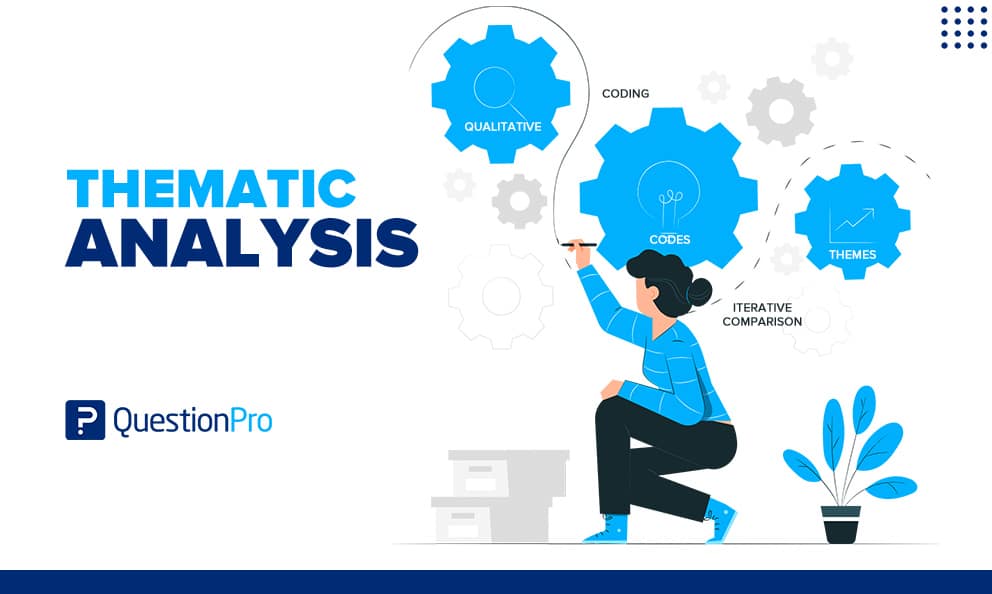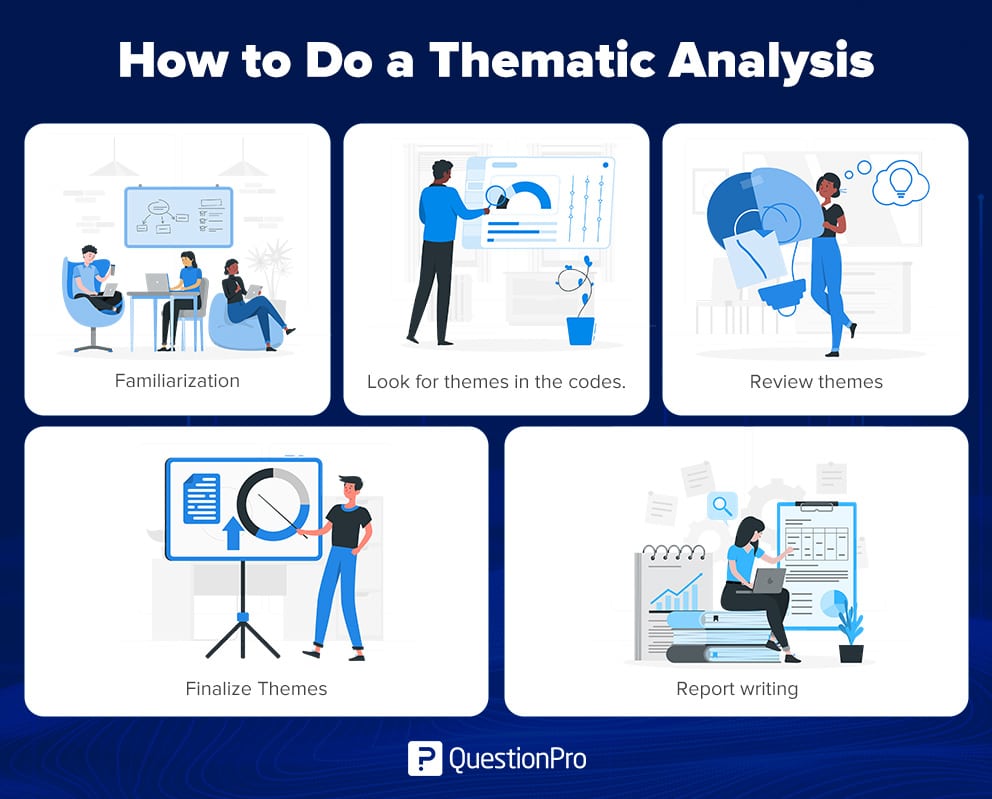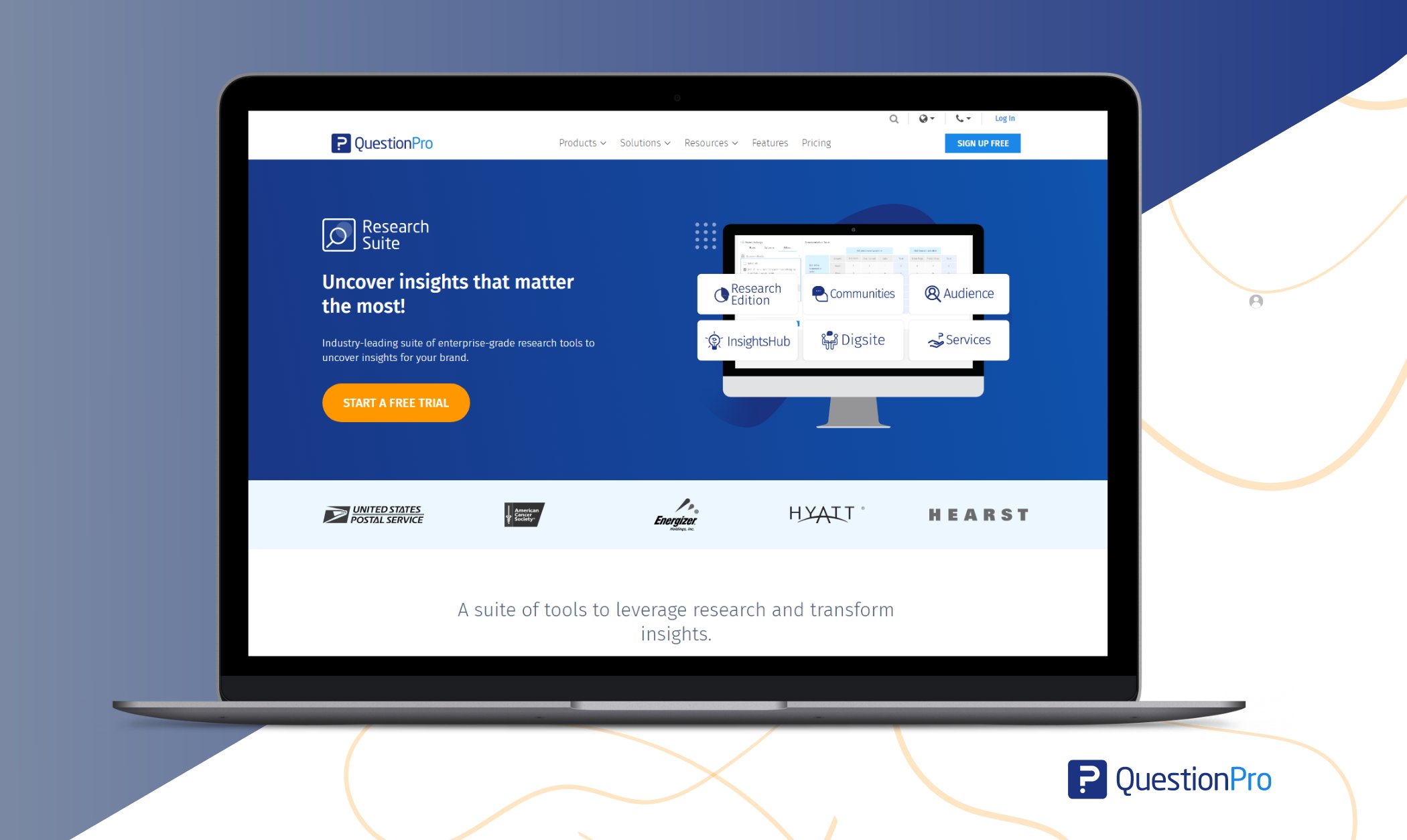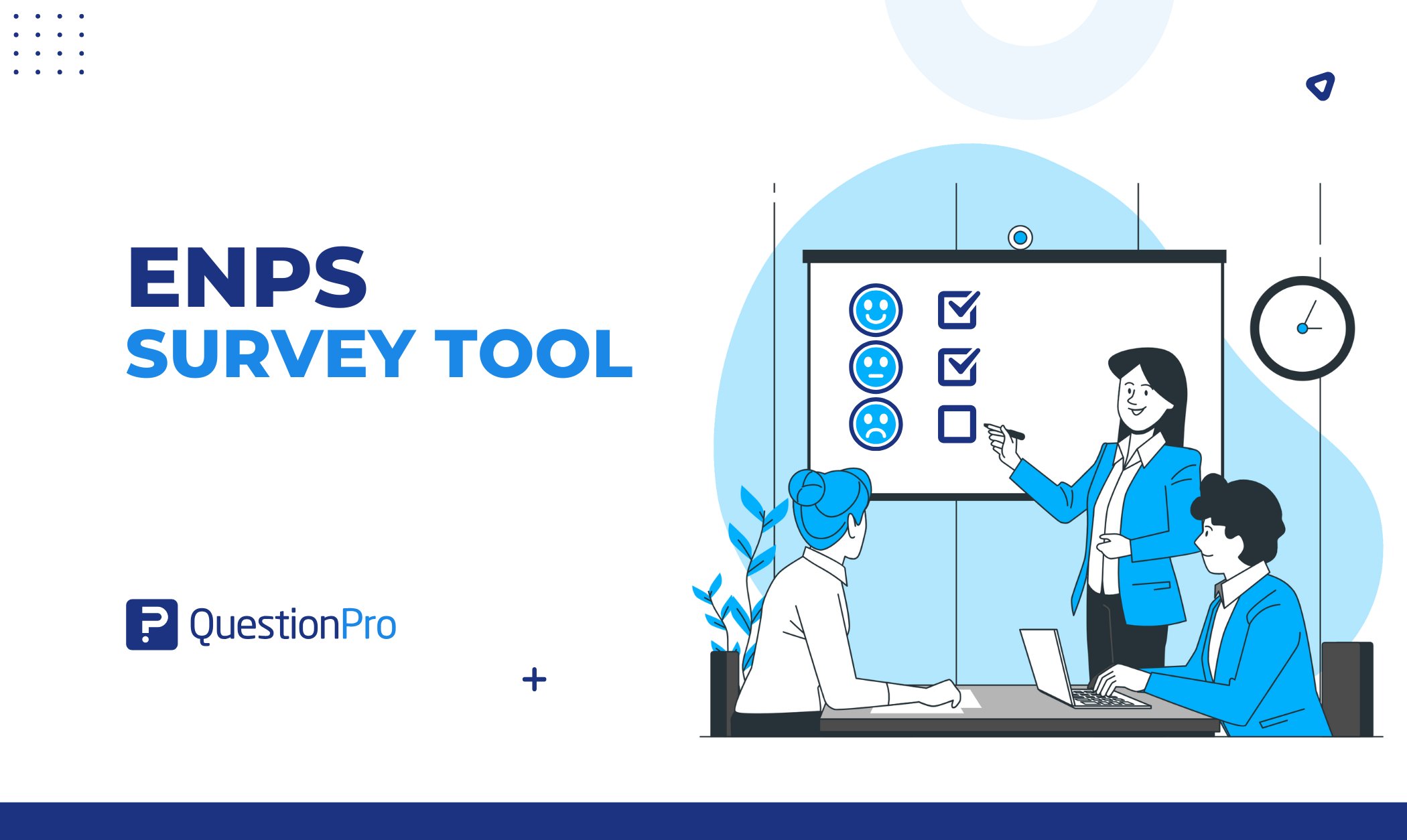
Thematic analysis helps researchers explore underlying patterns in qualitative data, making it valuable for studies focused on understanding perspectives, experiences, or social constructs. It allows researchers to distill extensive, complex data into themes, revealing insights into the studied subject.
Qualitative analysis may be a highly effective analytical approach when done correctly. Thematic analysis is one of the most frequently used qualitative analysis approaches.
One advantage of this analysis is that it is a versatile technique that can be utilized for both exploratory research (where you don’t know what patterns to look for) and more deductive studies (where you see what you’re searching for).
In this blog, we’ll explore the definition of thematic analysis, outline the steps to perform it effectively, and discuss its advantages. This blog will provide you with a clear understanding of how thematic analysis can transform qualitative data into actionable insights.
What is Thematic Analysis?
Thematic analysis is a method for analyzing qualitative data that involves reading through a set of data and looking for patterns in the meaning of the data to find themes.
This kind type of analysis is an active process of reflexivity in which the researcher’s subjective experience is at the center of making sense of the data.
Thematic analysis is commonly categorized within qualitative research techniques because it emphasizes identifying, analyzing, and interpreting patterns in qualitative data.
With this analysis, you can look at qualitative data in a certain way. It is usually used to describe a group of texts, like an interview or a set of transcripts. The researcher looks closely at the data to find common themes: repeated ideas, topics, or ways of putting things.
When to Use Thematic Analysis?
Thematic analysis is most effective when you need to explore and interpret detailed, rich information from participants’ experiences, opinions, or perspectives.
As mentioned, this type of analysis can be incredibly helpful when looking to uncover patterns or themes within your research data. Below are some of the most common situations where thematic analysis is applied:
- Perceptions: Understanding how people perceive or interpret a situation, like how patients perceive doctors in a hospital setting.
- Experiences: Exploring personal experiences, such as young women’s experiences on dating sites.
- Ideas and Opinions: Investigating public ideas or opinions on broader topics, like climate change.
- Cultural Constructs: Analyzing how social concepts, such as gender, are constructed, e.g., in high school teaching.
Thematic analysis is precious when flexibility and a broad understanding of data are needed. It helps make sense of qualitative data by grouping it into recurring themes, even though it requires careful reflection to avoid missing nuances or letting subjectivity skew the results.
Steps of Thematic Analysis
Let’s jump right into the process of thematic analysis. Remember that what we’ll talk about here is a general process, and the steps you need to take will depend on your approach and the research design.

1. Familiarization
The first stage in thematic analysis is examining your data for broad themes. This is where you transcribe audio data to text.
At this stage, you’ll need to decide what to code, what to employ, and which codes best represent your content. Now, consider your topic’s emphasis and goals.
Keep a reflexivity diary. You’ll explain how you coded the data, why, and the results here. You may reflect on the coding process and examine if your codes and themes support your results. Using a reflective notebook from the start can help you in the later phases of your analysis.
A reflexivity journal increases dependability by allowing systematic, consistent data analysis. If using a reflexivity journal, specify your starting codes to see what your data reflects. Later on, the coded data may be analyzed more extensively or may find separate codes.
2. Look for Themes in The Codes
At this stage, search for coding patterns or themes. From codes to themes is not a smooth or straightforward process. You may need to assign alternative codes or themes to learn more about the data.
As you analyze the data, you may uncover subthemes and subdivisions of themes that concentrate on a significant or relevant component. At this point, your reflexivity diary entries should indicate how codes were understood and integrated to produce themes.
3. Review Themes
Now that you know your codes, themes, and subthemes. Evaluate your topics. At this stage, you’ll verify that everything you’ve classified as a theme matches the data and whether it exists in the data. If any themes are missing, you can continue to the next step, knowing you’ve coded all your themes properly and thoroughly.
If your topics are too broad and there’s too much material under each one, you may want to separate them so you can be more particular with your research.
In your reflexivity journal, please explain how you comprehended the themes, how they’re backed by evidence, and how they connect with your codes. You should also evaluate your research questions to ensure the facts and topics you’ve uncovered are relevant.
4. Finalize Themes
Your analysis will take shape now after reviewing and refining your themes, labeling, and finishing them. Just because you’ve moved on doesn’t mean you can’t edit or rethink your topics. Finalizing your themes requires explaining them in-depth, unlike the previous phase. Whether you have trouble, check your data and code to see if they reflect the themes and whenever you need to split them into multiple pieces.
Make sure your theme name appropriately describes its features.
Ensure your themes match your research questions at this point. When refining, you’re reaching the end of your analysis. You must remember that your final report (covered in the following phase) must meet your research’s goals and objectives.
In your reflexivity journal, explain how you choose your topics. Mention how the theme will affect your research results and what it implies for your research questions and emphasis.
By the conclusion of this stage, you’ll have finished your topics and be able to write a report.
5. Report Writing
At this stage, you are nearly done! Now that you’ve examined your data, write a report. A typical thematic analysis report includes:
- A starting
- An approach
- The results
- Outcome
When drafting your report, provide enough details for a client to assess your findings. In other words, the viewer wants to know how you analyzed the data and why. “What,” “how,” “why,” “who,” and “when” are helpful here.
So, what did you find? What did you do? How did you choose this method? Who are your research’s focus and participants? When were your studies, data collection, and data production? Your reflexivity notebook will help you name, explain, and support your topics.
While writing up your results, you must identify every single one. The reader needs to be able to verify your findings. Make sure to relate your results to your research questions when reporting them.
Practical business intelligence relies on the synergy between analytics and reporting, where analytics uncovers valuable insights, and reporting communicates these findings to stakeholders. You don’t want your client to wonder about your results, so make sure they’re related to your subject and queries.
Using the right tool can make a big difference when conducting this type of analysis. If you're looking for a complete and reliable platform, we invite you to visit: getthematic.com
Thematic Analysis Advantages and Disadvantages
A technical or pragmatic view of research design focuses on researchers conducting qualitative analyzes using the method most appropriate to the research question. However, there is seldom a single ideal or suitable method, so other criteria are often used to select methods of efficient analysis: the researcher’s theoretical commitments and familiarity with particular techniques.
The thematic analysis provides a flexible method of data analysis and allows researchers with diverse methodological backgrounds to participate in this type of analysis. Data analytics and data analysis are closely related processes that involve extracting insights from data to make informed decisions.
For positivists, ‘reliability’ is a concern because of the many possible interpretations of the data and the potential for researcher subjectivity to ‘bias’ or distort the analysis. For those committed to the values of steps in qualitative research, researcher subjectivity is seen as a resource (rather than a threat to credibility), so concerns about reliability do not remain.
There is no correct or precise interpretation of the data. The interpretations are inevitably subjective and reflect the position of the researcher. Quality is achieved through a systematic and rigorous approach and the researcher’s continual reflection on how they shape the developing analysis.
Thematic analysis has several advantages and disadvantages. It is up to the researchers to decide if this analysis method is suitable for their research design.
Advantages of Thematic Analysis
Thematic analysis offers several advantages to make it a popular choice for analyzing qualitative data. Here are some of its key advantages:
- The flexibility of theoretical and research design allows researchers to explore multiple theories that can be applied to this thematic analysis process in various epistemologies.
- Very suitable for large data sets.
- The data coding and codebook reliability approaches are designed for use with research teams.
- Interpretation of themes supported by data.
- Applicable to research questions that go beyond the experience of an individual.
- It allows the inductive development of codes and themes from data.
Disadvantages of Thematic Analysis
Thematic analysis comes with several benefits that make it a great choice for analyzing qualitative data. Here are some of the main advantages, explained in a simple way:
- Thematic analysis can miss nuanced data if the researcher is not careful and uses thematic analysis in a theoretical vacuum.
- The flexibility can make it difficult for novice researchers to decide which aspects of the data to focus on.
- Limited interpretive power if the analysis is not based on a theoretical framework.
- It is challenging to maintain a sense of data continuity across individual accounts due to the focus on identifying themes across all data elements.
- Unlike discourse analysis and narrative analysis, it does not allow researchers to make technical claims about language use.
Overall, while thematic analysis has its drawbacks, its flexibility, simplicity, and ability to provide rich insights make it a popular and valuable method for qualitative research. The key is to use it carefully and thoughtfully to ensure the findings are reliable and meaningful.
Why QuestionPro Research Suite Can Be Useful for Thematic Analysis?

The QuestionPro Research Suite can be highly beneficial for conducting thematic analysis by providing tools that streamline data collection, organization, and analysis of qualitative data. These features make the process more efficient and effective.
QuestionPro allows researchers to gather data from multiple sources, such as:
- Surveys
- Interviews and
- Open-ended responses
This centralized collection of data ensures that all information is easily accessible, which is crucial for the effective organization and analysis required in thematic analysis.
Another valuable feature is automated text analysis and coding. QuestionPro includes text analysis tools that automatically code responses, highlighting recurring words and themes.
This can significantly help in the early stages of thematic analysis, as it makes it easier to identify common patterns in the data. It speeds up the process and helps researchers focus on the most relevant themes.
Additionally, advanced filtering and tagging features help in efficiently categorizing and tagging data. With this tool, responses can be sorted by themes or specific participant characteristics, which allows researchers to organize themes in a systematic way.
Overall, the QuestionPro Research Suite provides a range of tools that make thematic analysis more manageable, saving time and improving the accuracy and depth of the analysis.
Conclusion
By following the simple steps of thematic analysis, you begin by getting familiar with the data, creating codes, identifying key themes, and finalizing your findings. This process helps you create a clear and organized structure for your research findings.
It’s great for both small and large datasets, making it accessible to many types of research. However, it’s important to remain mindful of its limitations, such as the potential for researcher bias and the need for careful reflection throughout the process.
Overall, thematic analysis is a powerful tool that can transform qualitative data into meaningful insights, guiding researchers in making informed decisions. Whether you’re just starting out or have experience with qualitative research, thematic analysis provides a straightforward and effective way to explore and interpret your data.
Tools like the QuestionPro Research Suite can make thematic analysis even easier by helping you collect, organize, and analyze your data more efficiently. Automated text analysis, coding features, and advanced filtering help streamline the process, saving time and allowing for more accurate results. Contact us for more details!
Frequently Asked Questions( FAQs)
Thematic analysis is a method for analyzing qualitative data that involves reading through a set of data and looking for patterns in the meaning of the data to find themes. It is an active process of reflexivity in which the researcher’s subjective experience is at the center of making sense of the data.
Here are the 5 steps of thematic analysis:
1. Familiarization.
2. Look for themes in the codes.
3. Review themes.
4. Finalize Themes.
5. Report writing.
Avoid using thematic analysis in these situations:
1. Need for Quantitative Data.
2. Highly Structured Data.
3. Requirement for Objective Results.
4. Complex, Nuanced Data.





![[CX]-TCXT-closing-the-loop](https://www.questionpro.com/blog/wp-content/uploads/2025/06/CX-TCXT-closing-the-loop.jpg)

